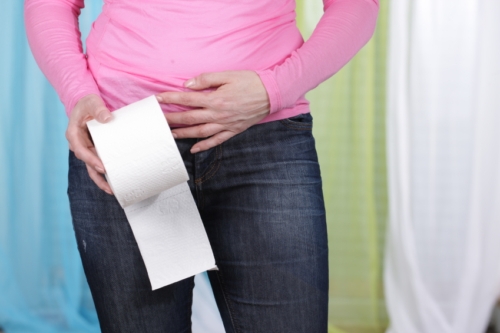
A large amount of blood may warrant a visit to the emergency room.

Conditions such as hemorrhoids or fissures can also cause small amounts of blood, so if you notice blood, contact your physician and be sure to explain any other symptoms that you may be experiencing at the same time. One of the most disturbing symptoms of colon cancer can be bleeding from the rectum or blood in the toilet. Blood in your stool, bleeding from the rectum, and/or change in the appearance of the stool Nearly 90% of colorectal cancer is easily treatable when diagnosed in early stages. If cancer is suspected, the earlier the cancer is detected the better off you will be. Chances are good that your symptoms can be treated. Fear of a cancer diagnosis shouldn’t keep you away from seeing your health care provider if you are experiencing symptoms. What is celiac disease? (2016) /SiteData/docs/WhatisCeli/7df546428970c440/What%20is%20Celiac%20Disease.It is important to remember that most these conditions may have causes other than colon cancer.(2015, July 21) cdc.gov/parasites/giardia/infection-sources.html Sources of infection and risk factors.Stool color: When to worry /stool-color/expert-answers/faq-20058080 (2016, August 23) /condition/gilbert-syndrome (2013, November) /health-information/health-topics/digestive-diseases/diarrhea/Pages/facts.aspx Chemical composition and formation of human feces-problems and solutions of large mergers demographics in developing countries /10cd/OralPdf/Oral%2039.pdf 12 types of baby poop and what they mean (infographic).You can learn more about how we ensure our content is accurate and current by reading our editorial policy. Healthline has strict sourcing guidelines and relies on peer-reviewed studies, academic research institutions, and medical associations. It may also be from certain gluten products or a diet high in fats. Some causes of this are eating foods high in food coloring, carrots, or sweet potatoes.

Your stool can be yellow because of your diet. This limits the volume of nutrients your body can absorb and may cause diarrhea and yellow stool. Part of your body’s response to stress and anxiety may be to speed up the digestive process. According to the Centers for Disease Control and Prevention, giardiasis is the most widespread intestinal parasitic infection in the United States. Giardiasis is a common disorder worldwide. Giardiasis may become chronic, though this is rare. Although some people don’t require treatment, most are given antibiotics. Giardiasis is diagnosed by testing a stool sample. foul-smelling diarrhea that is often yellow.These are typically ingested with your food or water. You get giardiasis by ingesting giardia cysts. Giardiasis is an infection of the intestinal tract by a microscopic parasite called giardia. Gilbert’s syndrome is usually left untreated. Symptoms of the disorder, primarily mild jaundice, are so mild that many people don’t know they have it. National Library of Medicine reports that Gilbert’s syndrome affects 3 to 7 percent of Americans. Gilbert’s syndrome is a genetic liver disorder characterized by periods when bilirubin levels are too high. The most common symptoms include:Īlthough there is no cure for celiac disease, it can be treated effectively by eliminating gluten from your diet. This can make it difficult to diagnose the condition. Celiac disease commonly runs in families.Īccording to the National Foundation for Celiac Awareness, more than 300 symptoms are associated with celiac disease. When this happens, your intestines aren’t able to absorb the nutrients your body needs. If you have celiac disease and eat gluten, your body’s immune system responds by attacking and damaging the tissues of your small intestine. Gluten is a protein found in wheat, rye, and barley. Undigested fat can give the stool a yellow, greasy appearance causing it to float or appear frothy. These conditions prevent your pancreas from providing enough of the enzymes your intestines need to digest food. Disorders that affect the pancreasĬhronic pancreatitis, pancreatic cancer, a blockage in the pancreatic duct, or cystic fibrosis can also turn your stool yellow. Not only may this cause pain, but it can also turn your stool yellow. Gallstones or sludge in the gallbladder reduce the amount of bile that reaches your intestines. Liver and gallbladder disordersĬirrhosis of the liver and hepatitis reduce or eliminate bile salts that help the body digest food and absorb nutrients. But yellow stool, sometimes called pale stool, can also indicate a number of health problems.

You likely have a varied diet and changes in your diet impact your stool. It’s normal for your stool to change color.


 0 kommentar(er)
0 kommentar(er)
